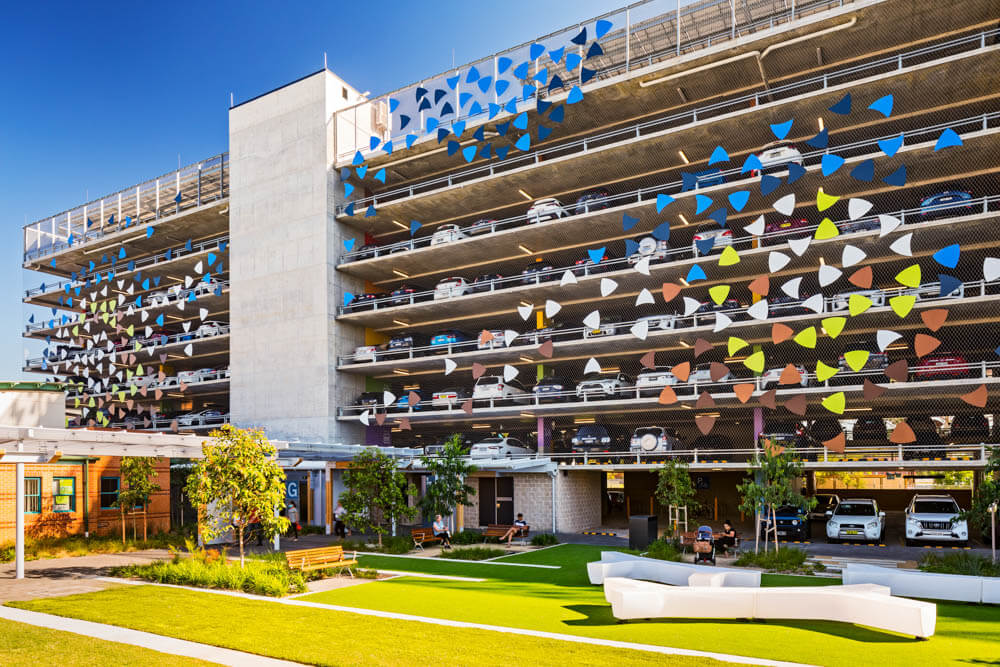-
Australia
Copyright © 2025 Powered by BCI Media Group Pty Ltd
Confirm Submission
Are you sure want to adding all Products to your Library?
Contact Detail
09 Dec 2024 by Tensile Design & Construct

Advancements in fall protection systems are helping to keep modern infrastructure installations safe, preventing falls from height, while also providing other benefits.
In our projects, we frequently use tensioned Webnet as the main material. Webnet is a flexible stainless steel mesh that can be engineered to fully meet compliance for fall protection and non-climbability. At the same time, it has a light, almost transparent appearance, and it can be customised to suit any installation.
These features (among others) make Webnet an advanced material ideal for modern infrastructure projects requiring a safe barrier that is also subtle, elegant and efficient rather than inflexible and clunky like some older barrier materials.
Webnet fall protection systems for projects
Here are examples of Webnet fall protection systems for four different types of infrastructure projects.
1. Children’s playgrounds
Children’s playgrounds that come with climbing towers and elevated platforms naturally need to be made as safe as possible. At the same time, it’s important that the barrier doesn’t detract from the design or interfere with the children’s play activities.
One of our most recent playground barrier installations is at the Ribbon Playground in Darling Harbour, Sydney.
This playground has a unique maritime theme complete with rigging and wave-like forms. The flexibility of Webnet made it possible for the barriers to be designed to reflect the coastal themes. The barriers align with the structure’s geometric shapes, while meeting load and safety requirements at the same time.
We love the look of the completed playground – check it out!
2. Footbridges
The safety requirements for pedestrian and cycle bridges over roads, railways and water courses are strict. Any safety barriers installed must comply with AS5100.2 and AS1170.
Webnet footbridge barriers can be designed in a variety of ways. For example, they can use a modular approach, or be constructed from Webnet frames, or designed as an anti-throw screen if required. In many cases they can also be attached to the bridge off-site during the construction phase, to speed up installation and reduce public disruption.
One of our favourites is the Elizabeth Quay footbridge that crosses over the river in Perth. This bridge has a unique S-curve form design that contributes to a sense of movement. A modular approach was used in designing and building the barriers, A series of panels were created to match the bridge’s curves and integrate with the existing balustrades. This enabled a very quick installation – you can see the finished project here.

3. Cultural hubs
Where public spaces have elevated viewing platforms, any barriers need to be designed in a way that maintains safety while allowing for clear sightlines.
The Ned Kelly Discovery Centre in Victoria is a prime example. The discovery hub, comprising a series of helices and a curving staircase that leads up to a lookout platform, has Webnet barriers that flex around its structure and allow for viewing points.
This allows visitors to fully experience the Ned Kelly story in complete safety. Take a look at the completed installation on our project page.
4. Multi-storey carparks
Where multi-level carparks require a safety barrier, Webnet can be surprisingly effective. It meets all fall protection compliance requirements while allowing for natural light and airflow. It can also be installed very quickly and be used to support greenery or artistic elements.
This combination of features can save money in terms of expensive mechanical air-exchange systems as well as labour and installation costs.
An example is the Liverpool Hospital carpark in Sydney, which has a Webnet screen that wraps around its structure. The barrier also supports coloured plates that form a mosaic artwork depicting the region’s cultural history. It’s pretty amazing to look at – check it out here!
This sort of project wouldn’t be possible without the advanced characteristics of Webnet mesh, which is able to drape like fabric and is quick to install.
You can see more examples of infrastructure fall protection systems on our project page. To find out more or to discuss your project idea, please get in touch.




